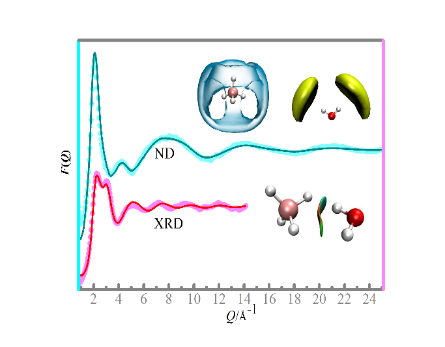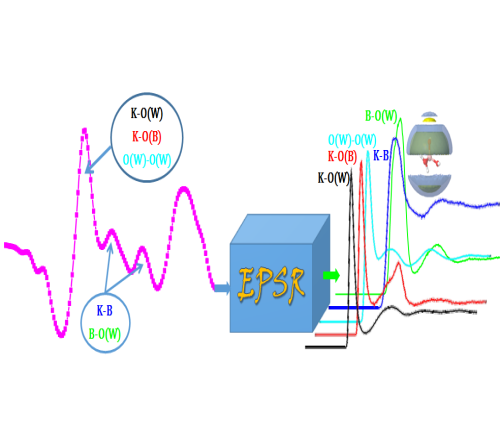For a long time, the structure of liquid has been a research difficulty in the field of physics and chemistry. X-ray scattering, as an important method for directly obtaining structural information of solutions, still faces many difficulties in the study of the liquid structure of multi-component weak scattering samples such as borate, lithium/hydrogen-containing compounds, etc. For example, the details of the dihydrogen bond and anion hydration in the crystal structure are relatively clear. However, there is little direct experimental evidence on the details of dihydrogen bonding and anion hydration in solution. Recently, the solution structure research group of the Salt Lake Resource Chemistry Laboratory of ISL and the Yamaguchi Research Group of Fukuoka University in Japan have used the J-PARC spallation neutron source in Japan and the ISIS spallation neutron source in the UK to obtain some new progress on this issue.
As we all know, X-rays have very low scattering ability for light atoms such as hydrogen and boron. The neutron scattering is very sensitive to light atoms, especially replacing H with D and B with 11B, its scattering ability far exceeds X-ray scattering. In response to the scientific problem of dihydrogen bonding in solution, the research team used X-rays, neutron scattering and EPSR based on Mote Carlo simulation to refine the structure of the basic deuterated aqueous solution of deuterated boron deuterated sodium, which was accurately obtained. The number and orientation of dihydrogen bonds in NaBD4 solution give the first direct experimental evidence of dihydrogen bonds in aqueous solution. At the same time, the strength and nature of the dihydrogen bond were explained by DFT calculation and wave function analysis. The result was published in the latest issue of The Journal of Physical Chemistry Letters, 2020, 1622. (IF=7.329, https://pubs.acs. org/doi/abs/10.1021/acs.jpclett.9b03183).
In order to study the structure of potassium tetrahydroxyborate solution, the research team used X-ray and neutron scattering to study the structure of di-deuterated water, mono-deuterated water and aqueous solution of K11B(OD)4, and obtained the hydration of borate anions in the solution and Information about its association structure, the research results were published in the latest issue of Analyst (IF=4.019, https://pubsrsc.xilesou.top/en/content/articlelanding/2020/an/c9an01662g), and further research results will be published one after another.
At the same time, the research team also cooperated with the team of Professor Zhang Yunhong of Beijing University of Chemical Technology to build an in-situ Raman spectroscopy system of microdroplets with controllable humidity according to the principle of salt lake brine evaporation concentration and dilution dissolution. The system further expands the concentration range of saline solution, and provides a new way for understanding the law of ionic association and crystallization in supersaturated solutions. Relevant research results have been published in J. Raman spectrum., Spectrochimica Acta Part A and other publications.
At present, with the support of the National Natural Science Foundation of China, the Qinghai Provincial Department of Science and Technology, the Western Light of the Chinese Academy of Sciences and the Youth Innovation Promotion Association of the Chinese Academy of Sciences, the solution structure research group of ISL is also focusing on the structure and metastability of borate solution. The structure and phase transition properties of restricted saline solution, the structure of borate amorphous system and the solution structure in the actual extraction system of salt lake adsorption were carried out for further research work.


